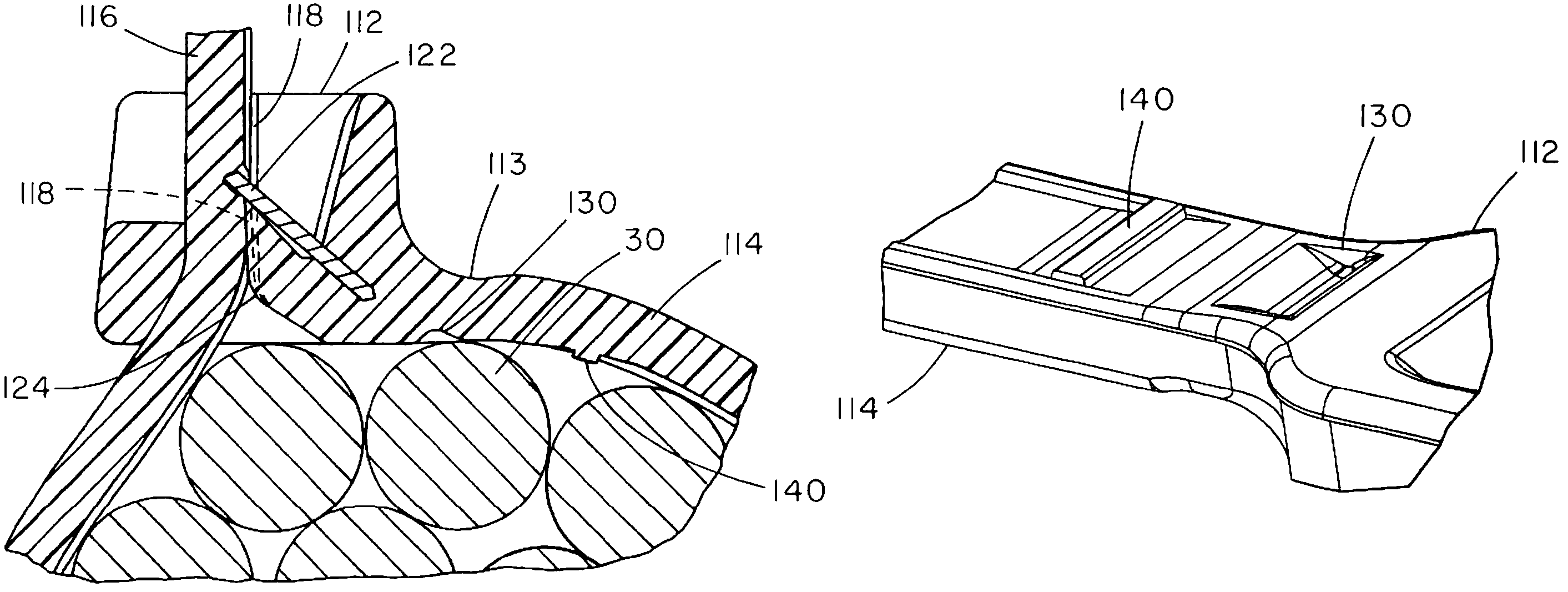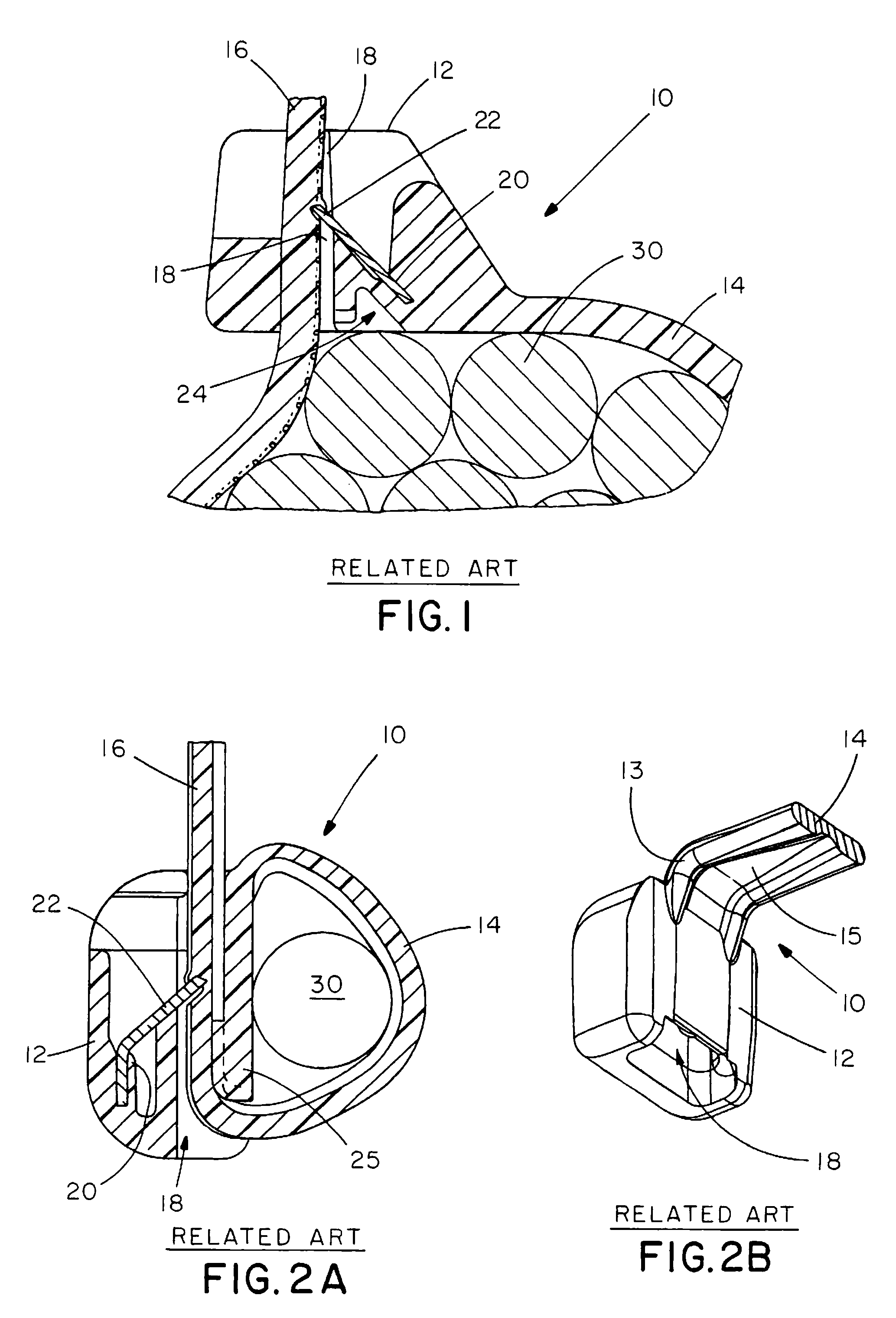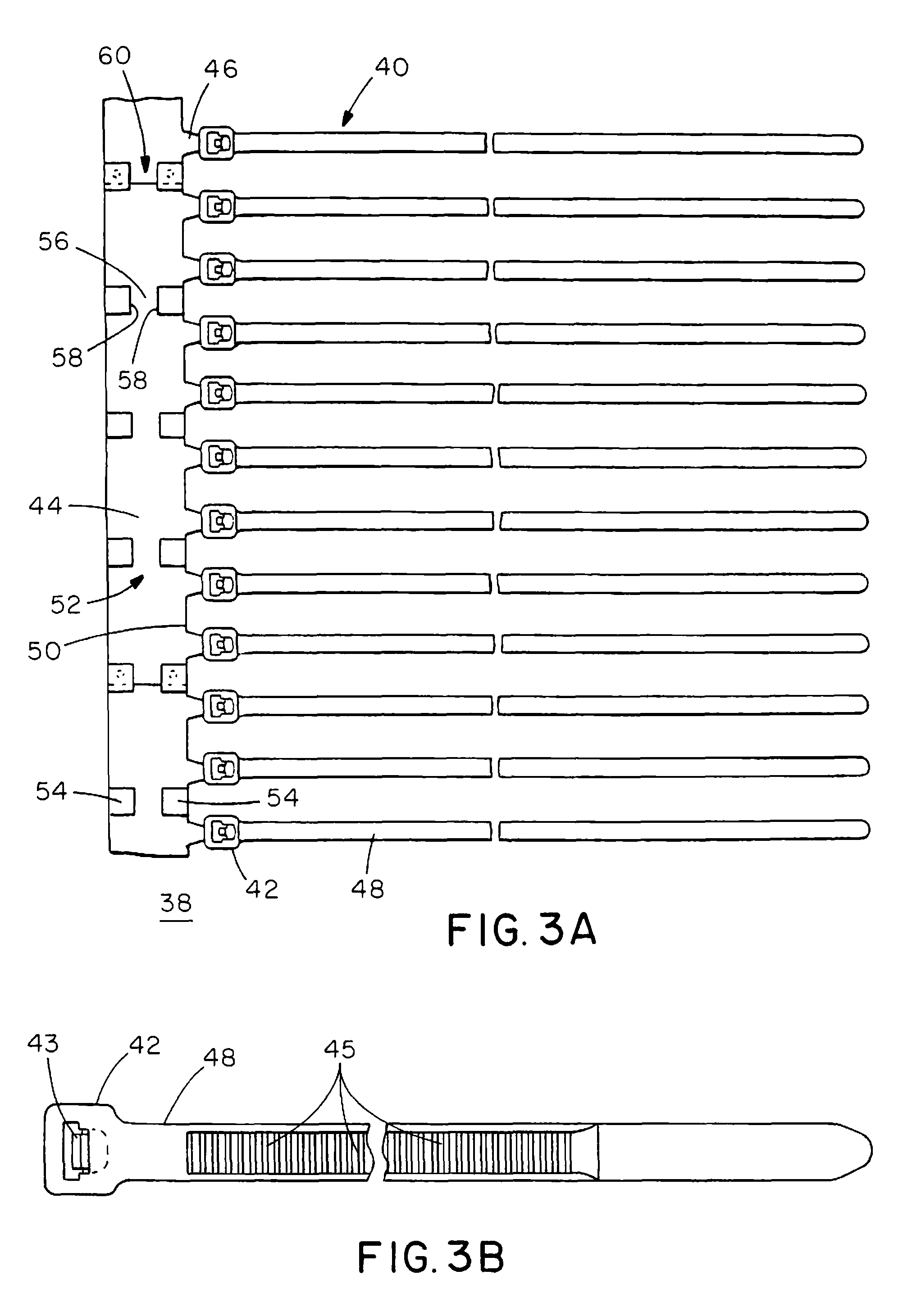Two-piece cable tie suitable for use in an automated cable tie installation tool
a technology of automatic cable tie installation and cable tie, which is applied in the direction of hose connection, flexible elements, packaging, etc., can solve the problems of cable tie brittleness, cable tie rotation, and often broken wedge-shaped teeth, and achieves shallow height and width, increased grip, and resistance to cable tie rotation
- Summary
- Abstract
- Description
- Claims
- Application Information
AI Technical Summary
Benefits of technology
Problems solved by technology
Method used
Image
Examples
Embodiment Construction
[0051]An exemplary embodiment of a two-piece cable tie suitable for use in an automated cable tie installation tool will be described with reference to FIGS. 5-15. FIGS. 5-7 show partial top, cross-sectional and bottom views, respectively, of an exemplary cable tie 100 having a head 112, strap 114, strap accepting channel 118, and a metal locking device 122 fixed in a locking device channel 120 so that an end of metal locking device 122 protrudes slightly into strap accepting channel 118. A reinforcement area 126 (best seen in FIG. 7) is provided immediately under the metal locking device 122. Reinforcing area 126 extends radially inward from the periphery of the strap accepting channel 118 to support an additional portion of the metal locking device and resist deformation or complete inversion of the metal locking device from excessive retraction forces applied to a cinched cable tie.
[0052]Rather than the typical substantially square edge profile of the strap accepting channel 118 ...
PUM
 Login to View More
Login to View More Abstract
Description
Claims
Application Information
 Login to View More
Login to View More - R&D
- Intellectual Property
- Life Sciences
- Materials
- Tech Scout
- Unparalleled Data Quality
- Higher Quality Content
- 60% Fewer Hallucinations
Browse by: Latest US Patents, China's latest patents, Technical Efficacy Thesaurus, Application Domain, Technology Topic, Popular Technical Reports.
© 2025 PatSnap. All rights reserved.Legal|Privacy policy|Modern Slavery Act Transparency Statement|Sitemap|About US| Contact US: help@patsnap.com



